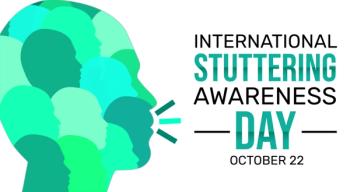
- Vol 35, Issue 6
- Volume 35
- Issue 6
Why Attend a Professional Conference?
This article present some of the highlights from talks and presentations at this year’s American Neuropsychiatric Association Annual Meeting.
Thoughts After Attending the American Neuropsychiatric Association Annual Meeting
Attending a professional conference is not easy. There’s the disruption to your schedule and the responsibility for finding clinical coverage. If the meeting is out of town, substantial financial costs and advanced planning are involved. Many of us also have to negotiate the extra burden placed on family members who care for children and households while we’re away. Then there’s the packing, traveling, and, for some, managing social anxiety, especially around unscheduled meals at the conference itself. It’s not a vacation. Why do we bother?
The recent 29th Annual Meeting of the American Neuropsychiatric Association (ANPA) reminded me of the reasons that I do bother to make the effort every year. This article present some of the highlights from talks and presentations at this year’s ANPA meeting (see Sidebar).
However, even outstanding content does not propel attendance: content is only the focal point around which other, important aspects of a conference experience unfold. After all, excellent and up-to-date information is available online 24/7, from home, and perusing that material on your computer may be a more efficient use of your time than sitting through a lecture that might be boring or offer you little new information. Moreover, it is possible to purchase continuing education credits for much less money than the cost of traveling to a professional conference. Once again, why do we bother?
The benefits of attending professional conferences extend beyond the program. My experience at the ANPA conference is surely similar to what others feel when they attend well-planned conferences sponsored by organizations in their areas of interest. There is a sense of excitement, the “thrill of the crowd,” as those who are passionate about a subject gather and devote time to a shared experience away from the ordinary day-to-day. Contributing to this thrill is the opportunity to interact informally with the field’s thought-leaders during breaks in the program, social hours, or poster sessions. In addition, the expected gratification that comes from hearing an outstanding scientific talk is multiplied when well-informed audience members ask probing questions and animated discussions spill out of the auditorium into the coffee break. Learning new ways of thinking often requires this kind of deeper, more active engagement with material.
For me, one of the best things was that fellow attendees didn’t seem to tire of talking about the brain and behavior, which allowed me to indulge my enthusiasm for the subject. Whenever I stopped to notice, I could see small groups of people gathering to chat. Catching bits of their conversations, I heard discussions about challenging patient situations, plans for collaboration being formulated, information being shared. “I’ll send you that paper.” “I have a student who might be interested in working with you.” “You ought to talk with . . . .”
One only needed to walk a few steps to find an expert who could help you sort out some confusion or answer a question. Gathered in one room were remarkably experienced clinicians, researchers, teachers, writers, and editors in areas of interest to many psychiatrists: traumatic brain injury, functional movement disorders, both common and rare forms of dementia, the role of the cerebellum in cognition, anti-NMDA receptor encephalitis, neuropsychiatric manifestations of epilepsy, the genetics of autism spectrum disorder, in short-topics from Alzheimer disease to neuropsychiatric rare diseases -“the Zebras.”
Enrico Fermi is reputed to have said, “Never underestimate the joy people derive from hearing some thing they already know.” We all appreciate hearing presentations that reinforce our fund of knowledge and validate our experiences with patients. There is added benefit when a speaker is able to expand that knowledge into new territory or when the talk helps us to see current information from a different perspective, be that an historical panorama or the view from another field of study such as law, rehabilitation medicine, data science. On the other hand, there is a case to be made for sitting through some talks that we can’t quite follow. This is like a “good mental-stretch.” It reminds us that science is wide and deep, and there’s always more to learn.
In attending any conference, our fondest hope is that we might encounter a truly inspiring lecture. Talks of this nature are in a class of their own, bestowing upon the listener a personal feeling of exhilaration; they leave each audience member feeling re-energized, uplifted, aware of expanded possibilities, and back in touch with the deeply meaningful aspects of one’s own work.
Presentations like this are rare, but Lucia Willadino Braga, PhD, from the SARAH Network of Rehabilitation Hospitals in Brazilia, Brazil, delivered one. Using several remarkable case examples, Dr. Braga demonstrated how education and neurorehabilitation harness the brain’s neuroplasticity, resulting in changes in structural and functional connectivity.
One of her patients was a popular Brazilian music star who had suffered a traumatic brain injury and spinal cord lesion. It seemed unlikely that he would ever be able to sing or play guitar again given that he had post-traumatic memory deficits and paraplegia. Yet, after one year and 9 months of intensive rehabilitation he was back to performing. The professionals from the SARAH network had worked with the patient and his band; together they had formulated strategies for helping the musician. For example, when he forgot lyrics while on stage, he would turn his back to the audience momentarily in a way that seemed entirely natural, and this gave other band members the opportunity to remind him of the words.
Another case involved a healthy, 45-year old man from a remote Brazilian villageThis gentleman had never been exposed to written language. At the SARAH hospital, he was taught to read and write. Functional imaging and diffusion tensor imaging (DTI) were used to track the changes in his brain as he went through this process of first learning to identify letters, then learning to read syllables, then simple sentences, and so on.
Initially, before any instruction had begun, looking at written language did not elicit a different response in the patient’s visual cortex than looking at non-linguistic, visual stimuli. However, in sync with the various phases of language acquisition, the specific areas of the brain that are generally associated with these aspects of language became activated. There also was substantial enlargement of the arcuate fasciculus that connects brain regions involved in language function.
What made this talk so extraordinary? The SARAH network hospitals are guided by Dr. Braga’s powerful vision, which she has made into a reality. All individuals are treated with equal attention and respect. From the very first encounter, the patient, the family, and specialists from diverse professional backgrounds meet to create a working team. Their goal is to help each patient attain his or her maximal level of functioning. The SARAH team utilizes an ecological method that persists outside the treatment center and involves real-life situations.
The SARAH network is also devoted to innovation. For example, they developed a program that trains high school students to work with individual patients outside the hospital setting. The students take patients to sporting events and other activities, thereby harnessing the power of peer learning. To help overcome stigma, a “wheelchair” for children was created that looks more like a colorful plastic toy than a medical appliance for the disabled.
Some of SARAH’s financial support comes from Brazilian congressional discretionary health care funding. Also innovative is the funders know exactly which specific project they are supporting (eg, the production of a training video, the development of a new rehabilitation program, research that will lead to a scientific publication). The funders are then given specific feedback about the progress and outcome of “their” project.
Dr. Braga is doing what we all aim for-to help patients by harnessing the synergistic power of scientific knowledge and human relationships. She left her audience with a feeling that it is possible to raise the bar in one’s own practice and be more effective, creative, and generative. This kind of hopefulness is long remembered.
The benefits of attending a professional conference extend far beyond the content itself, and these benefits accrue if you attend year after year. The meetings help you nurture a deepening knowledge in the topic area. Repeat attendance also adds the pleasure of reconnecting each year with colleagues from around the country or around the world. Becoming actively involved in the organization (such as serving on a committee) might take little extra time over the course of a year but can add a sense of belonging; this transforms the experience of simply “going to a conference” into the experience of “being part of the organization.”
Like many professional organizations, the ANPA looks to the future and works to advance the field. The ANPA committee for research is developing clinical recommendations specifically for neuropsychiatric disorders. These go-to guides to best practices will be evidence-based whenever possible and they will reflect expert consensus. Recommendations are currently being developed for the following topics: assessment of psychogenic non-epileptic seizures; assessment of functional movement disorders and weakness; treatment of functional neurological disorders; assessment and treatment of neuropsychiatric aspects of fronto-temporal dementia.
In addition, ANPA honors individuals who have made important scientific, educational, and/or clinical contributions. Groups such as ANPA foster the careers of talented young people by hosting poster presentations and bestowing awards that recognize early career accomplishments. As a member of the organization, you become part of this generous spirit-grateful to those who have truly devoted themselves to making a difference and encouraging those who will influence the future of medicine.
References:
1. Braga LW, Amemiya E, Tauil A, et al. Tracking adult literacy acquisition with functional MRI: a single case study. Mind Brain Ed. 2017;11:121-132.
2. Dehaene S. Pegado F, Braga LW, et al. How learning to read changes the cortical networks for vision and language. Science. 2010;330:1359-1364.
Articles in this issue
over 7 years ago
Using Telehealth to Enhance Access to Evidence-Based Careover 7 years ago
Revisiting the Rationale and Evidence for Peer Supportover 7 years ago
Introduction: The Scope of Psychiatryover 7 years ago
Reflections on Psychiatry in Supported Housingover 7 years ago
Addressing Poverty and Mental Illnessover 7 years ago
ETHICS QUIZ | Faith and Reasonover 7 years ago
A Kind of Mirraculas Paradise by Sandra Allenover 7 years ago
Revisiting the Hallucinogenic Potential of Ketamineover 7 years ago
Handgrip Strength and Cognitive Performance in SchizophreniaNewsletter
Receive trusted psychiatric news, expert analysis, and clinical insights — subscribe today to support your practice and your patients.

















